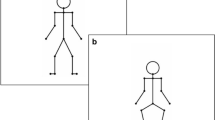Summary
This study addressed the question of whether the expressive microstructure of a music performance remains relationally invariant across moderate (musically acceptable) changes in tempo. Two pianists played Schumann's “Träumerei” three times at each of three tempi on a digital piano, and the performance data were recorded in MIDI format. In a perceptual test, musically trained listeners attempted to distinguish the original performances from performances that had been artificially speeded up or slowed down to the same overall duration. Accuracy in this task was barely above chance, suggesting that relational invariance was largely preserved. Subsequent analysis of the MIDI data confirmed that each pianist's characteristic timing patterns were highly similar across the three tempi, although there were statistically significant deviations from perfect relational invariance. The timing of (relatively slow) grace notes seemed relationally invariant, but selective examination of other detailed temporal features (chord asynchrony, tone overlap, pedal timing) revealed no systematic scaling with tempo. Finally, although the intensity profile seemed unaffected by tempo, a slight overall increase in intensity with tempo was observed. Effects of musical structure on expressive microstructure were large and pervasive at all levels, as were individual differences between the two pianists. For the specific composition and range of tempi considered here, these results suggest that major (cognitively controlled) temporal and dynamic features of a performance change roughly in proportion with tempo, whereas minor features tend to be governed by tempo-independent motoric constraints.
Similar content being viewed by others
References
Clarke, E. F. (1982). Timing in the performance of Erik Satie's ‘Vexations’. Acta Psychologica, 50, 1–19.
Clarke, E. F. (1985). Structure and expression in rhythmic performance. In P. Howell, I. Cross, & R. West (Eds.), Musical structure and cognition (pp. 209–236). London: Academic Press.
Clynes, M., & Walker, J. (1986). Music as time's measure. Music Perception, 4, 85–120.
Desain, P., & Honing, H. (1992a). Tempo curves considered harmful. In P. Desain & H. Honing, Music, mind, and machine (pp. 25–40). Amsterdam: Thesis Publishers.
Desain, P., & Honing, H. (1992b). Towards a calculus for expressive timing in music. In P. Desain & H. Honing, Music, nind, and machine (pp. 175–214). Amsterdam: Thesis Publishers.
Desain, P., & Honing, H. (1994). Does expressive timing in music performance scale proportionally with tempo? Psychological Research (this issue).
Gentner, D. R. (1987). Timing of skilled motor performance: Tests of the proportional duration model. Psychological Review, 94, 255–276.
Guttmann, A. (1932). Das Tempo und seine Variationsbreite. Archiv für die gesamte Psychologie, 85, 331–350.
Handel, S. (1986). Tempo in rhythm: Comments on Sidnell. Psychomusicology, 6, 19–23.
Heuer, H. (1991). Invariant relative timing in motor-program theory. In J. Fagard & P. H. Wolff (Eds.), The development of timing control and temporal organization in coordinated action (pp. 37–68). Amsterdam: Elsevier.
MacKenzie, C. L., & Van Eerd, D. L. (1990). Rhythmic precision in the performance of piano scales: Motor psychophysics and motor programming. In M. Jeannerod (Ed.), Attention and performance XIII (pp. 375–408). Hillsdale, NJ: Erlbaum.
Michon, J. A. (1974). Programs and “programs” for sequential patterns in motor behavior. Brain Research, 71, 413–424.
Palmer, C. (1989). Mapping musical thought to musical performance. Journal of Experimental Psychology: Human Perception and Performance, 15, 331–346.
Rasch, R. A. (1988). Timing and synchronization in ensemble performance. In J. A. Sloboda (Ed.), Generative processes in music (pp. 70–90). Oxford: Clarendon Press.
Repp, B. H. (1990). Patterns of expressive timing in performances of a Beethoven minuet by nineteen famous pianists. Journal of the Acoustical Society of America, 88, 622–641.
Repp, B. H. (1992). Diversity and commonality in music performance: An analysis of timing microstructure in Schumann's “Träumerei.” Journal of the Acoustical Society of America, 92, 2546–2568.
Repp, B. H. (1993). Some empirical observations on sound level properties of recorded piano tones. Journal of the Acoustical Society of America, 93, 1136–1144.
Repp, B. H. (in press). On determining the global tempo of a temporally modulated music performance. Psychology of Music.
Rorem, N. (1983). Composer and performance. (Originally published in 1967.) In N. Rorem, Setting the tone (pp. 324–333). New York: Coward-McCann.
Schmidt, R. A. (1975). A schema theory of discrete motor skill learning. Psychological Review, 82, 225–260.
Seashore, C. E. (1938). Psychology of music. New York: McGraw-Hill. (Reprinted by Dover Publications, 1967.)
Shaffer, L. H. (1980). Analysing piano performance: A study of concert pianists. In G. E. Stelmach & J. Requin (Eds.), Tutorials in motor behavior (pp. 443–455). Amsterdam: North-Holland.
Shaffer, L. H. (1981). Performances of Chopin, Bach, and Bartók: Studies in motor programming. Cognitive Psychology, 13, 326–376.
Shaffer, L. H. (1984). Timing in solo and duet piano performances. Quarterly Journal of Experimental Psychology, 36A, 577–595.
Shaffer, L. H. (1992). How to interpret music. In M. R. Jones & S. Holleran (Eds.), Cognitive bases of musical communication (pp. 263–278). Washington, DC: American Psychological Association.
Shaffer, L. H., Clarke, E. F., & Todd, N. P. (1985). Metre and rhythm in piano playing. Cognition, 20, 61–77.
Todd, N. P. McA. (1992). The dynamics of dynamics: A model of musical expression. Journal of the Acoustical Society of America, 91, 3540–3550.
Vernon, L. N. (1937). Synchronization of chords in artistic piano music. In C. E. Seashore (Ed.), Objective analysis of musical performance (pp. 306–345). University of Iowa Studies in the Psychology of Music, Vol. 4. Iowa City: University of Iowa Press.
Viviani, P., & Laissard, G. (1991). Timing control in motor sequences. In J. Fagard & P. H. Wolff (Eds.), The development of timing control and temporal organization in coordinated action (pp. 1–36). Amsterdam: Elsevier.
Author information
Authors and Affiliations
Rights and permissions
About this article
Cite this article
Repp, B.H. Relational invariance of expressive microstructure across global tempo changes in music performance: An exploratory study. Psychol. Res 56, 269–284 (1994). https://doi.org/10.1007/BF00419657
Received:
Accepted:
Issue Date:
DOI: https://doi.org/10.1007/BF00419657




